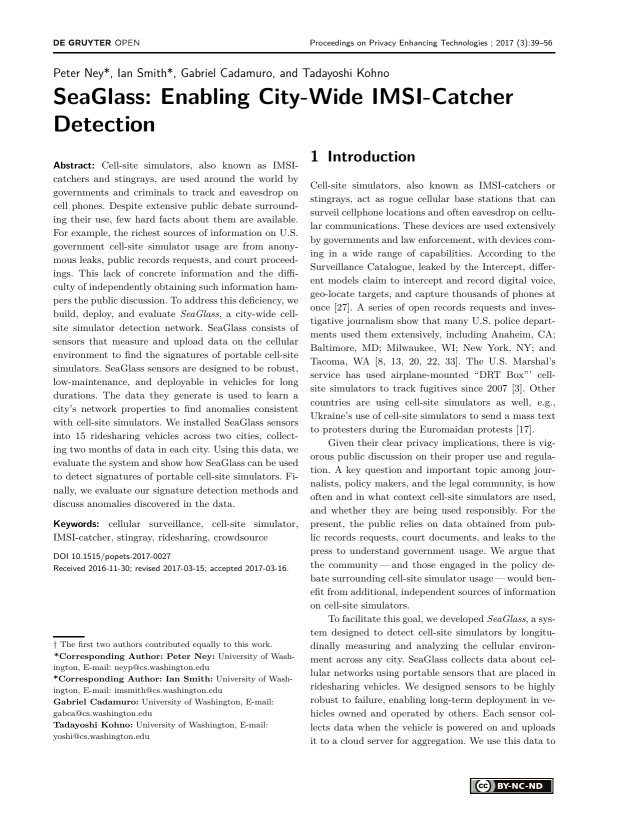SeaGlass: Enabling City-Wide IMSI-Catcher Detection
Authors: Peter Ney (University of Washington), Ian Smith (University of Washington), Gabriel Cadamuro (University of Washington), Tadayoshi Kohno (University of Washington)
Volume: 2017
Issue: 3
Pages: 39–56
DOI: https://doi.org/10.1515/popets-2017-0027
Abstract: Cell-site simulators, also known as IMSIcatchers and stingrays, are used around the world by governments and criminals to track and eavesdrop on cell phones. Despite extensive public debate surrounding their use, few hard facts about them are available. For example, the richest sources of information on U.S. government cell-site simulator usage are from anonymous leaks, public records requests, and court proceedings. This lack of concrete information and the difficulty of independently obtaining such information hampers the public discussion. To address this deficiency, we build, deploy, and evaluate SeaGlass, a city-wide cellsite simulator detection network. SeaGlass consists of sensors that measure and upload data on the cellular environment to find the signatures of portable cell-site simulators. SeaGlass sensors are designed to be robust, low-maintenance, and deployable in vehicles for long durations. The data they generate is used to learn a city’s network properties to find anomalies consistent with cell-site simulators. We installed SeaGlass sensors into 15 ridesharing vehicles across two cities, collecting two months of data in each city. Using this data, we evaluate the system and show how SeaGlass can be used to detect signatures of portable cell-site simulators. Finally, we evaluate our signature detection methods and discuss anomalies discovered in the data.
Keywords: cellular surveillance, cell-site simulator, IMSI-catcher, stingray, ridesharing, crowdsource
Copyright in PoPETs articles are held by their authors. This article is published under a Creative Commons Attribution-NonCommercial-NoDerivs 3.0 license.

